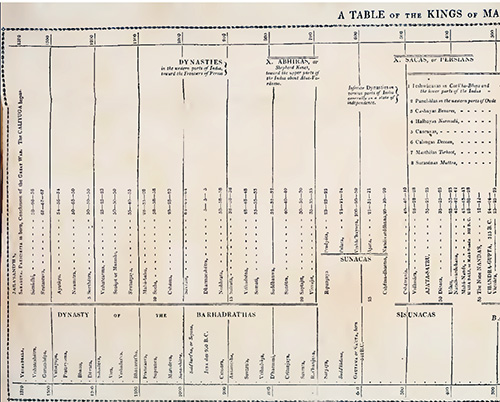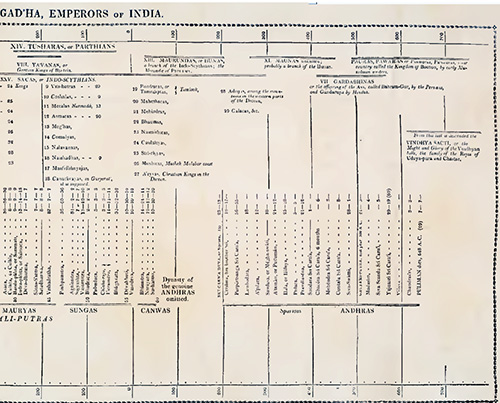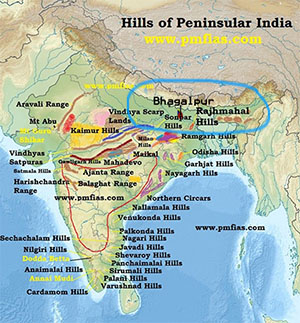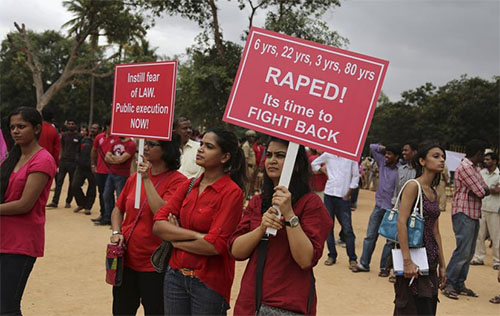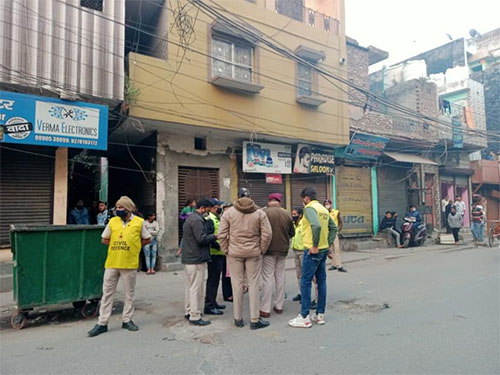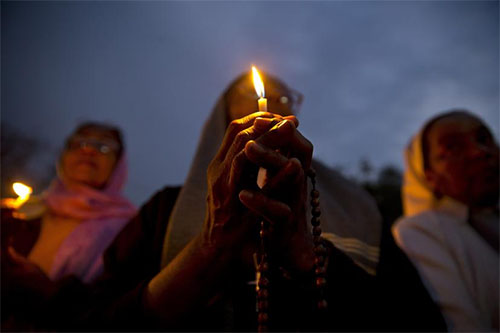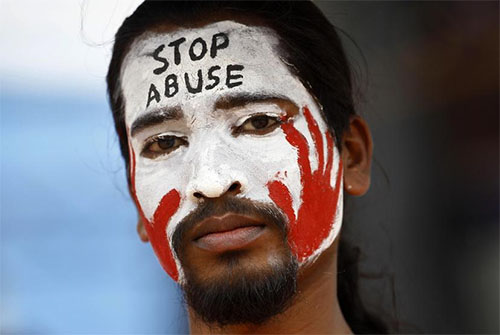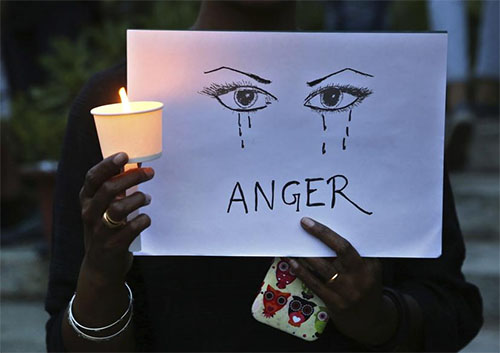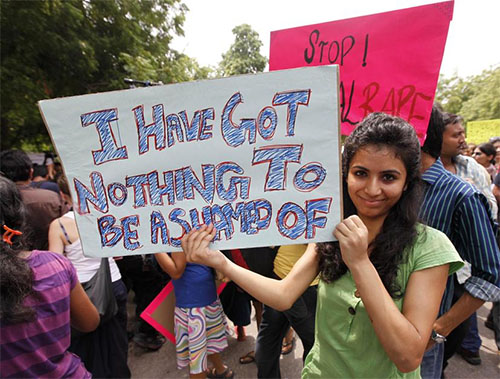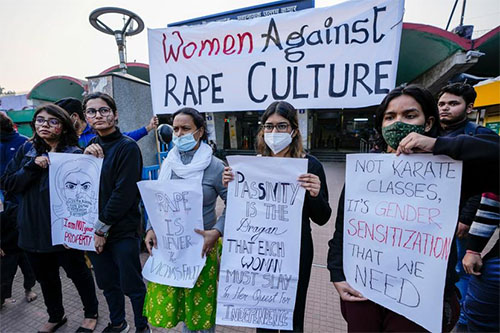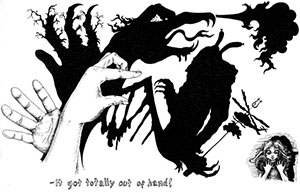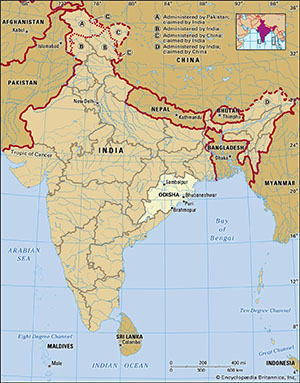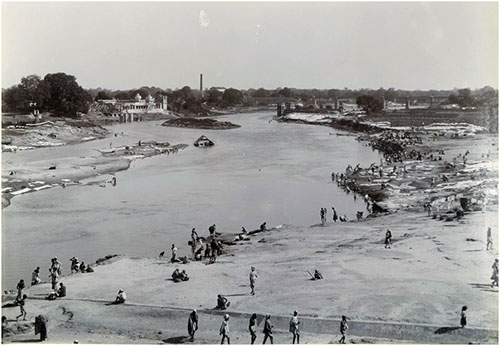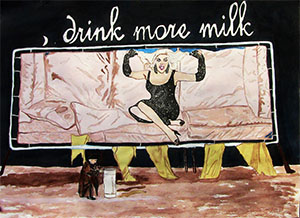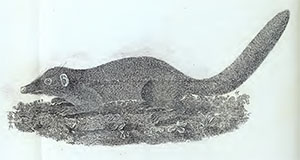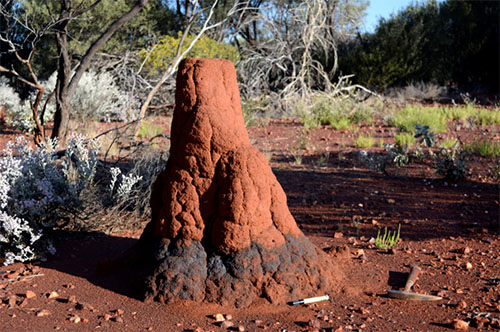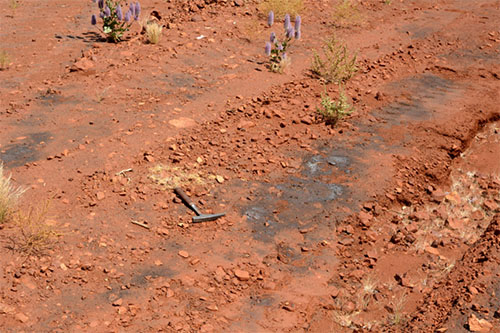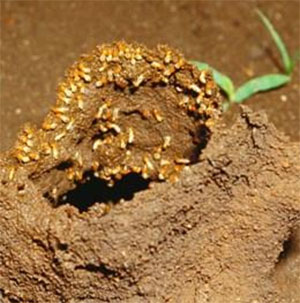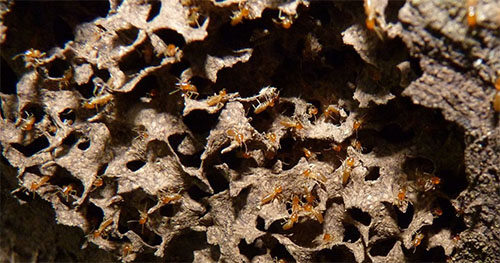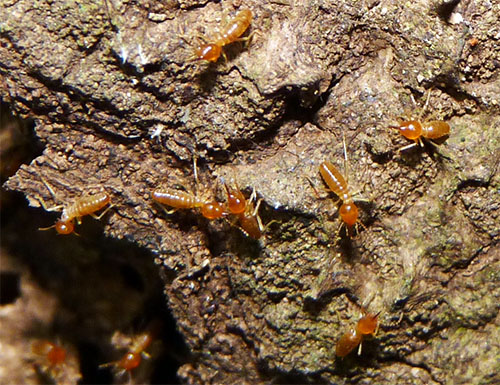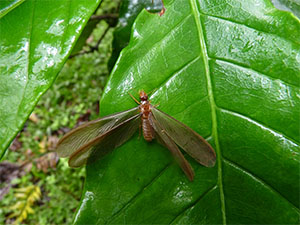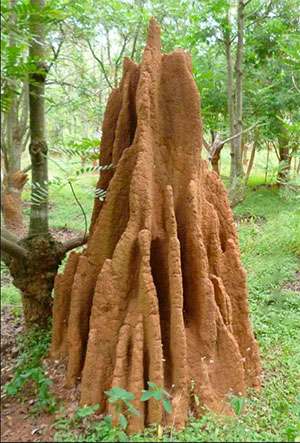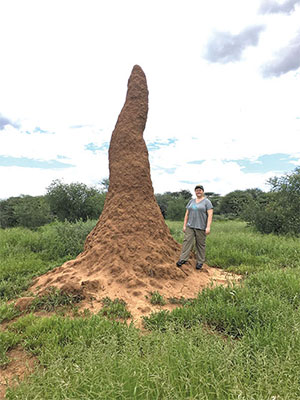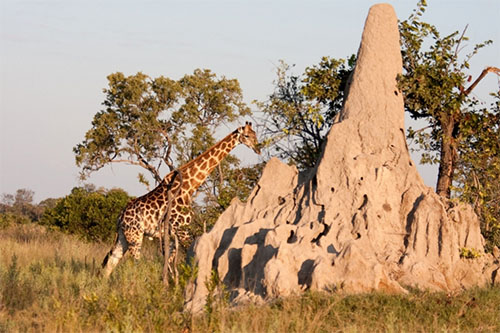From "The History, Antiquities, Topography, and Statistics of Eastern India; Comprising the Districts of Behar, Shahabad, Bhagulpoor, Goruckpoor, Dinajepoor, Puraniya, Rungpoor & Assam, in Relation to their Geology, Mineralogy, Botany, Agriculture, Commerce, Manufactures, Fine Arts, Population, Religion, Education, Statistics, Etc., Surveyed Under the Orders of the Supreme Government and Collated from the Original Documents at the East India House, With the Permission of the Honourable Court of Directors
by Montgomery Martin
in Three Volumes
Vol. 1, Behar (Patna City) and Shahabad
1838
NOTICE: THIS WORK MAY BE PROTECTED BY COPYRIGHT
YOU ARE REQUIRED TO READ THE COPYRIGHT NOTICE AT THIS LINK BEFORE YOU READ THE FOLLOWING WORK, THAT IS AVAILABLE SOLELY FOR PRIVATE STUDY, SCHOLARSHIP OR RESEARCH PURSUANT TO 17 U.S.C. SECTION 107 AND 108. IN THE EVENT THAT THE LIBRARY DETERMINES THAT UNLAWFUL COPYING OF THIS WORK HAS OCCURRED, THE LIBRARY HAS THE RIGHT TO BLOCK THE I.P. ADDRESS AT WHICH THE UNLAWFUL COPYING APPEARED TO HAVE OCCURRED. THANK YOU FOR RESPECTING THE RIGHTS OF COPYRIGHT OWNERS.
Chapter II. History of the Province of Behar
The remains of antiquity are exceedingly numerous in this district, but the traditions on the spot concerning them are very often altogether irreconcilable with appearances or with credibility, and still oftener contradict the few historical hints to be found in Hindu legend, while very often the people* [Dr. Buchanan says, "the people here are perhaps still less interested on this subject than in Bhagalpur, and even the Moslems seem to have abandoned all care of their history. At Behar, where several persons of good family and excellent manners reside, although one of them is called a Moulavi or Doctor of Laws, I could not procure from them any account of the Muhammedan governors of that city, nor did they possess any one historical book."] have no sort of tradition concerning the antiquities of their vicinity. The reason of this would appear to be, that in this district from a very remote period down to almost the very Muhammedan conquest, although now completely extinct, the doctrine of the Buddhists seems to have prevailed, and would appear to have been in general the doctrine professed by the governing powers.
The whole of these districts is universally allowed to be in the old Hindu territory called Magadha, and respecting this in the account of Bhagalpur, several circumstance are stated. I now however suspect, that this is a name considerably more modern than the government of Jarasandha or of his family, princes descended from Budha first king of India. Jarasandha, like many old kings of India, is called an Asur [Asura?], which is usually interpreted to imply an enemy of God; but many of these Asurs appear to have been uncommonly religious, and I am inclined to think, that the term Asur implies in reality an Assyrian, and there are many traces to show, that the worship of the Assyrian queen, and its concomitant doctrines, had been introduced at the capital of Jarasandha, although there are also many traces of the worship of the Buddhas, which had probably arisen in the interval between the arrival of Budha, the ancestor of Jarasandha from Assyria, and the extinction of the family of the Brihadrathas, descended from that ancient prince. Jarasandha, according to legend, being of a monstrous size, was wont to stand upon two hills of this district, having a foot on each, and to look at the 1000 wives of his kinsman Krishna, who lived near Gujjarat, as they bathed in the sea. Not contented with this indecency, which might perhaps have been overlooked, he pelted the naked beauties with bricks, on which they complained to Krishna, who sent Bhim, the supposed son of Pandu, to punish Jarasandha, and this prince was killed in a valley near his own house. This happened towards the end of the third age (Dwapar Yug) of the world; and, according to the valuable system of Indian chronology given by Mr. Bently (Asiatick Researches, vol. 8), the 4th age commenced in the 11th century (1004) before the birth of Christ.
The monarchy of India, according to common opinion, was after a short dispute transferred to Yudhishthir, the brother of Bhim; but, if Major Wilford is right in supposing that the Gangetic provinces continued to be governed by the Brihadrathas, or descendants of Jarasandha, for 700 years, the power of the great king must have been much circumscribed.
In the account of Bhagalpur I have supposed, that although Jarasandha is usually called king of Magadha, that Madhyadesa was the proper denomination of his empire, and that the term Magadha was not given to the territory of his family until its extent was reduced by his overthrow; but even after that event the kingdom seems to have been more extensive than that to which the term Magadha is ever applied. The most rational derivation of the term Magadha is that given by Major Wilford (As. Res. vol. 9, p.32). Samba, the son of Krishna, in order to cure himself of a disease, introduced a colony of Magas or Brahmans from a country called Saka. But Krishna being contemporary with Jarasandha, the introduction of the Magas by his son Samba must have been after the death of Jarasandha. Nor can we suppose that a small colony of physicians should at once change the name of a powerful kingdom in which they settled. It is farther worthy of remark, that the term Madhyadesa seems to have been applied to this country so late as the birth of Gautama (542 years before Christ); for in the account of that lawgiver, collected by Captain Mahony in Ceylon, he is said to have been born in Madda Dese, and he was undoubtedly born in the district of Behar.
These Magas are supposed to have introduced the worship of the sun, and there are many traces to show that the worship of this luminary is here of great antiquity; although I suspect that it was rather introduced by the conquests of the Persians under Darius than by the Magas or Brahmans, who probably came from Egypt, the only country I know where the doctrine of caste prevailed, and prevailed as described in the books of the Brahmans, and in a manner quite different from what they have been able to establish in India. If the Brahmans actually came from Egypt, we should naturally have expected that they would have preferred the worship of Isis and Osiris to that of the sun, especially as on their arrival they would find prevalent the very analogous doctrine of Belus and Semiramis, that is of Mahadeva and Parwati. By Brahmans I mean the highest or sacred order of the present Hindus, although I am sensible that the term has been applied to several distinguished persons, such as Vyas, who lived in India before the doctrine of caste became prevalent.
The introduction of these deities and priests by no means destroyed the religion of the Buddhas. Gautama considered as the lawgiver of Ava and Ceylon, and son of Maya, it is alleged was born in this district, and resided at Buddha-Gaya, under the protection of a Dharma-Asoka, who I presume is the same with the Ajaka [Ajaca] mentioned among the kings of Magadha by Major Wilford (As. Res. vol. 9) [-- Essay III. Of the Kings of Magadha; their Chronology, by Captain Wilford, Asiatic Researches, Volume 9, 1809. pgs. 94-100.], as contemporary (A.D. 542) with Gautama.]
A Table of the Kings of Magadha, Emperors of IndiaDynasty of the Barhadrathas
1370 / Vrimadrala
-- / Vrihateshetra
1300 / Gurucshepa
-- / Vatsayupa
-- / Prativyoma
-- Bhanu
1200 / Devaca
-- / Sahadeva
-- / Vira
-- / Vribadasva
1100 / Bhanuratha
-- / Praticasva
-- / Supratica
-- / Marudeva
1000 / Sunarshetra
-- / Siddhartha, or Sujana
-- Jina dies 950 B.C.
900 / Cinnara
-- / Antaricsha
-- / Suverna
-- / Vribadieja
800 / Dharmmi
-- / Critanjaya
-- / Suvrata
-- / Rathanjava
Sunacas
-- / Sanjaya / Ripunjaya
-- / Suddhodana / --
600 / Gautama or Sacya, born 542 B.C.
-- / -- / Cshema-dharma
Sisunacas
500 / --
400 / --
Mauryas / Bali-Putras
300 / --
200 / --
Sungas
100 / --
0 / --
Canwas
Dynasty of the genuine Andhras omitted
100 / --
200 / --
300 / --
Spurious
400 / --
Andhras
500 / --
600 / --
700 / --Jarasandha
1370 / Sahadeva. Paricsrita is born, Conclusion of the Great War. The Caliyuga begins.
-- / Somadhi / 58 - 98 - 58
1300 / Srutasrava / 67 - 67 - 67
-- Ajutayu / 54 - 36 - 31
-- Niramitra / 50 - 63 - 50
1200 / Sucshetra / 50 - 50 - 50
-- / Vrihatearma / 23 - 23 - 23
-- Sonajit or Manishi / 50 - 50 - 50
1100 / Srutanjaya / 35 - 40 - 35
Dynasties in the western parts of India, toward the Frontiers of Persia.
-- / Maha-bahu / 28 - 35 - 28
-- / Suchi / 58 - 58 - 58
1000 / Cshema / 28 - 28 - 23
-- / Suvrate / 61 - 64 - 64
-- / Dharmaeshetra / 5 - 5 - 5
900 / Nribhrata / 58 - 58 - 58
-- / Sultuta / 38 - 38 - 38
-- / Vrihadsena / 48 - 48 - 48
-- / Sumati / 33 - 33 - 33
X. Abhiras, or Shepherd Kings, toward the upper parts of the Indus about Atuc-Varanesa
800 / Suddhanwa / 32 - 32 - 32
-- / Sunetra / 40 - 40 - 40
-- / Saptajit / 30 - 30 - 30
700 / Visvajit / 35 - 35 - 35
-- / Pradyota / 23 - 23 - 23
-- / Palaca / 21 - 21 - 24
Inferior Dynasties in various parts of India generally in a state of independence.
600 / Vishnchayupa / 100 - 50 - 50
-- / Ajaca / 21 - 31 - 21
-- / Nandivarddhana / 20 - 20 - 20X. Sacas, or Persians
1 / Ieshwacavas in Cachha-Bhoja and the lower parts of the Indus / 24 Kings
2 / Panchalas in the western parts of Oude / 25
3 / Cashayas Benares / 24
4 / Halhayas Narmada / 24
5 / Canravas / 25
6 / Calingas Deccan / 32
7 / Maithilas Tirhoot / 28
8 / Surasenas Muttra / 23
9 / Viti-hotras / 20
10 / Coshalas / 9
11 / Mecalas Narmada / 13
12 / Asmacas / 20
13 / Meghas / --
14 / Comalyas / --
15 / Nalavansas / --
16 / Naishadhas / 9
17 / Manidhanyajas / --
18 / Canacavayas, in Gurjerat, it is supposed / --
19 / Pundracas, or Tamiradiptas=Tumlook / --
20 / Maheshacas / --
21 / Mehindras / --
22 / Baumas / --
23 / Naimishicas / --
24 / Caulateyas / --
25 / Stri-rajyas / --
26 / Mushicas, Mushek Malabar coast / --
27 / Aryvas, Christian Kings in the Deccan / --
28 / Adriyas, among the mountains in the western parts of the Deccan / --
29 / Calacas, &c. / --
500 / Cshetranja / 40 - 40 - 10
-- / Vidhisara / 28 - 28 - 28
-- / Ajata-Satru / 35 - 25 - 25
400 / Dasaca / 35 - 25 - 25
-- / Udasi / 23 - 33 - 23
-- / Nandi-vardubana / 42 - 42 - 42
-- / Maha-Nandi / 43 - 43 - 43
355 B.C. / Maha Bali, or Maha-Nanda / 28 - 88 - 28
-- / The Nine Nandas / 12 - 12 - __
315 B.C. / Chandra-Gupta / 24 - 24 - __
VIII. Yavanas, or Grecian Kings of Bactria.
XIV. Tusharas, or Parthians
300 / Varisara / 25 - 25 - 25
-- / Asaca / 36 - 36 - 36
-- / Culata, or Culala / 8 - 8 - 8
-- / Bandu-pahta, or Sammati / 9 - 9 - 9
-- / Indra-patita, or Salisuca / 13 - 14 - 13
-- / Deva-dharma / 7 - 7 - 7
-- / Suma-Sarma / 7 - 7 - 7
200 / Satadhanwa / 8 - 8 - 8
-- / Vrihadratha / 87 - 7 - 7
-- / Pushpamitra / 36 - 60 - 36
-- / Agnimitra / 81 - 2 - 2
-- / Sujyashta / 7 - 7 - 7
-- / Vasumitra / 13 - 10 - 10
100 / Bhadraca / 2 - 2 - 2
-- / Pubudaca / 3 - 3 - 3
-- / Chosha-raja / 3 - 3 - 3
-- / Vicramitra / 14 - 14 - 14
-- / Bhagavata / 32 - 32 - 32
-- / Devabhuti / 10 - 10 - 10
XIII. Maurundas, or Hunas, a branch of the Indo-Scythians; the Morundie of Ptolemy.
0 / Vasudeva / 10 - 10 - 10
-- / Bhumitra / 14 - 24 - 14
-- / Narayana / 12 - 12 - 12
-- / Susharma / 10 - 10 - 10
100 / --
190 / Sri Carna Deva, or Sipraen / 23 - 13 - __
200 / Crishna, his brother Sri / 16 - 17 - __
-- / Purportsanga Sri Carna / 56 - 55 - __
-- / Lambodara / 18 - __ - __
-- / Apilaca / 12 - __ - __
XI. Maunas unknown; probably a branch of the hunas.
300 / Sanduva, or Megha-swati / 18 - __ - __
-- / Atainan, or Putuman / 21 - 12 - __
-- / Hala, or Haleya / 25 - 28 - __
-- / Pulaca / 5 - 5 - __
-- / Pravillasena / 21 - 12 - __
400 / Sundara Sri Carna / 1 - __ - __
-- / Chacora Sri Carna, 6 months / __ - 6 - __
-- / Mehendra Sri Carna / __ - 3 - __
-- / Cuntala Sri Carna / __ - 8 - __
-- / Siva-Swami / 28 - 1 - __
Pauras, Pawaras or Punwaras, Punawarut, near country called the Kingdom of Boutou, by early Musulman writers.
500 / Gautami-Putra / 21 - 3 - __
-- / Madasim / __ - 4 - __
-- / Siva Scanda Sri Carni / __ - 3 - __
-- / Yajnasri Sri Carni / 29 / 19 (60)
600 / Vijava / __ - __ - __
From this list is descended the Vindhya Sacti, or the Might and Glory of the Vindhyan hills, the family of the Rajas of Uduya-pura and Chartor.
-- / Chandrasri / 3 - 3 - __
648 A.C. / Puliman dies / 7 - 7 - __
-- Essay III. Of the Kings of Magadha; their Chronology, by Captain Wilford, Asiatic Researches, Volume 9, 1809. pgs. 94-100.
This personage did not found the sect of the Buddhas, nor is the great temple of Dharma-Asoka dedicated to the lawgiver of Ava. It is, however, held in the highest veneration by the people of that country, as being the place where their lawgiver worshipped Mahamuni, the real founder of the sect. Gautama, the son of Maya, is not only claimed by the people of Ava as their lawgiver, but is worshipped by the Jain as the favourite disciple of Mahavira, who flourished about 582 years before Christ, and according to this sect, several petty princes of their persuasion governed in this country for 400 years before that period, and these have left behind some monuments, although none of any magnitude, nor to be compared with those of the Buddhists, who are acknowledged by the Jain to have retained the chief authority in Magadha in all times of antiquity. A Gautama is also claimed by the Brahmans as one of their most distinguished saints, and I have no doubt is the same personage whom the heretical sects worship. He seems to have been a person of very eminent science and reputation, who perhaps belonged to none of the three sects by whom he is now claimed. As this person is mentioned in the Vedas, these works must have been composed long after the time of Vyas, who was contemporary with Jarasandha, although he is usually considered as their compiler; but he is also universally given out by the Brahmans as the author of the Purans, some of which at least are evidently composed since the commencement of the Hijri; so that the opinions of the Brahmans on this subject cannot be implicitly received. In this district are very numerous monuments, which I refer to the period of Gautama, or of the Sunaka dynasty, of whom Ajaka or Dharma-Asoka was one. These monuments are attributed to a people called Kol and Chero, and some allege that these were different tribes, but in general they are considered as the same people, and I am persuaded that this is the case; for I am informed by Ramsundar Mitra, a very intelligent Bengalese, who long managed the revenue of Ramgar, where both people are still numerous, that they are in fact the same tribe; but that like the Bhungiyas of Bhagalpur, the Kol adhere to their old impurity of life; while the Chero, like the Suryabangsis of the same district, adhere to the rules of Hindu purity, and call themselves Kshatriyas or Rajputs; and among the fastnesses of Ramgar several chiefs of that tribe still retain considerable property. From the districts, of which I am now giving an account, both Kols and Cheros have been entirely eradicated, but the honour of this achievement is disputed. In general, quite contrary to my supposition, it is alleged that this tribe was expelled by the Muhammedans, led by a saint named Ebrahim Mulek Bayo; but for several reasons I do not hold this opinion tenable. These conquerors by no means expelled the Bandawats, who seem to have been possessed of the greater part of these districts at the time of the conquest, and the whole actions attributed to Ebrahim Mulek Bayo are exceedingly apocryphal, no such person, so far as I can find, being mentioned by historians. Farther, we are told by Major Wilford (As. Res. vol. 9, p. 91), that Yayati, an ancestor of Jarasandha, divided his empire among his five sons, and that Turvasu obtained the south, and in the 10th generation from Turvasu four brothers, Pandya, Kerala, Kola and Chola, divided the country between them. Kola lived in the northern parts of the Peninsula, and his descendants are called Koles to this day. That a whole nation should be descended from one prince, I confess, appears to me very improbable; but that a nation may have derived its name from a prince, may be believed. The Kols of this district may therefore have been the same with these Koles of the northern part of the Peninsula, now called Telingana, and on the failure of the direct line of Jarasandha, their prince, as a collateral branch of the same family, may have succeeded to the government of the Gangetic provinces, and may be the same with the Sunakas of Major Wilford, among whom Ajaca or Asoka was the fourth prince. This, I think, will be confirmed by the appearances which now remain. Kabar, the chief ruin attributed to the Kols or Cheros, is in the immediate vicinity of Buddha-Gaya, where the palace of Asoka stood, and has evidently been the work of a powerful prince, and strongly fortified, while the palace at Buddha-Gaya seems to have had very slight defences. I therefore presume that Kabar was the stronghold of the prince, who lived at Buddha-Gaya. But farther, these works are vastly too great for the supposition, that they belonged to petty chiefs, who at the time of the Muhammedan conquest occupied the small territory intervening between the country of the Bandawats on the east, and of the Raja of Kanoj and Banaras on the west. I therefore consider as much more probable, though less common, the tradition, which states that the Kol and Chero were expelled by the military Brahmans, who still possess the country, although these have been since subject to several other tribes. In the account of Bhagalpur* [Bhagalpur will be contained in the next volume.-[ED.]] I have described the present condition of these wretched people, and given a specimen of their language, which seems to be one of the original dialects of India, very little intermixed with the Sangskrita, and probably one of the barbarous dialects called Magadhi by the Sangskrita grammarians; for I have no doubt that the Pali, or sacred language of Ceylon and Ava, though introduced from Magadha, is merely a form of the Sangskrita language, and in Magadha was always a dead or learned language; having been introduced from Iran by the conquerors, who first civilized the Hindus. It is especially to be remarked that the priests of Ceylon, according to Captain Mahony, allege, that in Madda desa (Madhyadesa), when Gautama was born, the art of writing was not known; and the Kols, that is the dregs of the people, seem to have entirely rejected his doctrine, as they still do that of the Brahmans. The chief people or Chero, if Asoka was one of them, no doubt adopted the worship of the Buddhas, but have since been converted to the orthodox faith. It is also to be remarked, that this unfortunate tribe has not only been expelled from their new acquisitions on the Ganges, but has been driven into the barren recesses of their original territory in the north of the Peninsula by the Andhras, who seem originally to have come from the west of India, and have communicated their name to the original country of the Kols, which is also called Telingana from the warlike habits of its modern occupants. The vocabulary of the Kols has been examined by a Brahman of Telingana, who declares that it has no kind of affinity with the language now spoken in his native country, or to what in Madras is usually called the Gentoo language.
I have not been able to learn, on what authority Major Wilford calls Patna by the name of Padmavati, the residence of Nanda, king of India in the 4th century before Christ, and this denomination for Patna is not known to such, as I have consulted; nor could I hear of any remains of antiquity at the Mawbellypoor of Major Rennell on the Son river, which is said to have been the abode of Mahabali, another name for the same prince. I therefore suspect, that this great king never resided in this district. It seems to me however to have been about this period, that the Brahmans descended of the Magas arose into great distinction, and communicated to this district the name of their ancestors.
According to Major Dow’s history, when the emperor Firose III, in the year 1358, was returning from Bengal, he passed through the Padmavati forest, which is one of the old names of Patna, once the metropolis of that country. These forests abounded with elephants, and the emperor caught many.
-- VII. On the ancient Geography of India, by Lieut. Col. F. Wilford
I have found in this district no traditions concerning Chandragupta nor his descendants the Baliputras, although Palibothra his capital, is by Major Rennell supposed to be the same with Pataliputra, or Patna. This city is indeed allowed by all the Pandits to be called Pataliputra, but Pataliputra has no great resemblance to Palibothra, nor can Patali be rationally considered as a word of the same origin with Pali, said to be an ancient name of this country, and of its people and language. In the vicinity of Patna few traces of antiquity remain as a guide to conjecture; but, with all due deference for the opinion of Major Rennell, I doubt very much of its having been the Palibothra of the Greeks. The conjecture of Major Wilford, in the fifth volume of the Asiatick Researches, placing Palibothra at the old junction of the Kosi with the Ganges near Rajmahal, seems better founded, although all traces of the city have been swept away by numerous changes in the river; and although, when in that vicinity, I heard no traditions concerning the great personages who resided at Palibothra. But the Pali are still the most numerous tribe in Matsyadesa, the country immediately north and east from the situation, which Major Wilford assigns. Although this country no doubt belonged to the kings of the Gangarides, it was so far removed from their capital, that no traces of them are now to be discovered. That Patali however, has been a place of great consequence, from its being now universally called Patana, or the city by way of excellence, there can be no doubt, and this seems to have been during the reigns of the earlier princes of the dynasty of the spurious Andhras of Major Wilford, (As. Res. vol. 9, p. 43,) who governed until the year 640 after the birth of Christ; but between this period, and the government of the Baliputras ending about 160 years before the birth of Christ, Behar seems to have risen into great note, as capital of the Magas and of their country Magadha.
Bhagalpur & Rajmahal
At one time (before Christ, 800) this city, according to a learned priest of the Jain who resides there, belonged to a petty chief of that sect; but was afterwards fortified by a Maga Raja, who seems to have been a very powerful prince, and the ruins of buildings, attributed by all to this Maga, at Baragang, in the vicinity of Behar, are of an astonishing magnitude, as will be afterwards described. The persons, by whom they have been erected, have evidently been Buddhists, and were probably either the Andhra kings, or the princes who intervened between them and the descendants of Chandragupta; but they are abhorred as infidels, nor have I been able to learn any tradition concerning their names.
Finally; the classical authors concur in making Palibothra a city on the Ganges, the capital of Sandrocoptus. Strabo, on the authority of Megasthenes, states that Palibothra is situated at the confluence of the Ganges and another river, the name of which he does not mention. Arrian, possibly on the same authority, calls that river the Erranoboas, which is a synonime of the Sone. In the drama, one of the characters describes the trampling down of the banks of the Sone, as the army approaches to Pataliputra; and Putaliputra, also called Kusumapura, is the capital of Chandragupta. There is little question that Pataliputra and Palibothra are the same, and in the uniform estimation of the Hindus, the former is the same with Patna. The alterations in the course of the rivers of India, and the small comparative extent to which the city has shrunk in modern times, will sufficiently explain why Patna is not at the confluence of the Ganges and the Sone, and the only argument, then, against the identity of the position, is the enumeration of the Erranoboas and the Sone as distinct rivers by Arrian and Pliny: but their nomenclature is unaccompanied by any description, and it was very easy to mistake synonimes for distinct appellations. Rajamahal, as proposed by Wilford, and Bhagalpur, as maintained by Franklin, are both utterly untenable and the further inquiries of the former [Wilford] had satisfied him of the error of his hypothesis. His death prevented the publication of an interesting paper by him on the site of Palibothra, in which he had come over to the prevailing opinion, and shewn it to have been situated in the vicinity of Patna.* [Asiatic Researches, vol. xiv. p. 380.]
-- The Mudra Rakshasa, or The Signet of the Minister. A Drama, Translated from the Original Sanscrit, Select Specimens of the Theatre of the Hindus, Translated from Original Sanskrit, in Two Volumes, Vol. II, by Horace Hayman Wilson, 1835
To return to the spurious Andhra princes, who began to govern the Gangetic provinces from the year A.D. 200, I have said, that the first of them the Karnas probably resided in the Bhagalpur district; but some considerable monuments in Behar may be traced to this family. I must here correct an error in my account of Bhagalpur. I there have stated, that these princes were probably of the sect of Jain; but a learned priest of that sect, who resides at Behar, informed me, that the Karna Rajas were heretics. They were probably Buddhists, as Major Wilford states, on the authority of the Chinese annals, that the king of the Gangarides in the year 408 of the Christian era was of that sect, and this opinion is confirmed by the monuments, which these princes have left in Behar. It must be however observed, that Sudraka the first of the spurious Andhras is said by Major Wilford to have governed at Pataliputra (As. Res. vol. 9, p. 146;) but of this I can learn nothing on the spot, while at Bhagalpur, and in the interior of this district, the Karnas have left numerous traces and traditions. At Patna it is alleged, that Patali the daughter of Sudarsan Raja founded that city, and I suspect that Major Wilford may have considered Sudarsan and Sudraka as the same name, an error into which I was at one time led. There was a Raja Sudarsan, a prince of the family of the sun, and the 18th in lineal descent from Mama; but whether or not the father of Patali was the same person, I do not pretend to conjecture. The latter princes of the dynasty of the spurious Andhras lived probably at Patna, and according to Major Wilford had palaces at Phulwari and Sambalpur in the vicinity; but, very few remains of antiquity are to be found in that vicinity, which may perhaps be owing to changes occasioned by the river.
I have not discovered any remains of considerable works being attributed to the Pala Rajas, or other princes of note, who governed the Gangetic provinces after the overthrow of the dynasty of the spurious Andhras. The Palas, I believe, resided usually at Chandalgar or Chunar, so far distant, that none of their great works extended to this district; but several inscriptions acknowledging their power remain at Gaya; and one of them perhaps had a house at Narawat. This dynasty is well known to have been of the sect of the Buddhas. In fact, so far as relates to Magadha, until the approach of the Muhammedans, the Brahman priests, although this probably was one of their most ancient abodes in India, if not their original seat, do not seem to have made much progress in converting the people. There is even reason to suspect, that by far the greater part of even these Magas became infected with the heresy of the Buddhas, for the term Maga is by many Brahmans in this country considered as synonymous with kirat, or infidel; and it is supposed by all the orthodox Hindus, that whoever dies in Magadha, will in a future life be born an ass, the emblem of his obstinacy; while, from what I have above narrated, it will appear, that most of the dynasties which have governed Magadha, have professed the doctrine of the Buddhas. It is to this period which intervened between the overthrow of the spurious Andhras and the Muhammedan conquest, that we may with the greatest probability refer the government of Basu Raja, of whom an account is given in the Vayu-Puran. He resided at Rajagriha in Behar, the ancient seat of Jarasandha; and, although perhaps tributary to the Palas, seems to have been a prince of considerable power. He was undoubtedly orthodox; and, being desirous of establishing an orthodox priesthood for the sacred places near his residence, seems to have been under the necessity of bringing persons of the sacred order from the south of India, as the Brahmans of Magadha were then probably infected with the doctrine of the Buddhas. It must however be observed, that one of the ancestors of Jarasandha was named Basu, and probably resided in the Rajagriha. It may therefore be supposed, that this was the Basu, who introduced the Brahmans of that place; but as the Vayu-puran, in giving an account of Basu and his colony, alludes to the usual division of Brahmans into ten nations, and as that division appears very modern, it is by far most probable that he was of a late date, when compared with Basu the ancestor of Jarasandha.
In 1192, according to Dow's translation of Ferishta, Cuttab, who was the first Muhammedan king of Delhi, (then in the service of Mahommed Ghori,) defeated Rai Joy, probably the last of the Pala family, who was king of Kanoj and Banaras; after which he took possession of the country as far as Bengal without opposition. It seems however very doubtful, whether any part of this district belonged then to the Raja of Benaras, as Indradawan, a Bandawat Rajput, had possession of the adjacent parts of Bhagalpur, and he no doubt possessed also the whole eastern parts of this district, where many traces remain of him and his tribe. I consider him as of the Andhras nation, and founder of the great city of Warankol. The adjacent country had probably belonged to his ancestors for several generations; as the ancestors of Pratapa Rudra, the last king of Warankol, are said to have possessed the regal power for eighteen generations; and the time between the retreat of Indradawan, and the destruction of Warankol will not admit of so many princes. Indradawan therefore, probably relinquished his Gangetic territory without a struggle, contented to preserve what was defended from the ferocious Moslems, by the fastnesses of the Vindhyan mountains.
In 1225 Yeas-ul-din was appointed governor of Behar by Altumsh king of Delhi, who had then reduced Bengal to his authority; but so careless were the Muhammedan princes, that the two viceroys of these kingdoms entered into a regular war, in which the governor of Behar was killed. In the year 1266, the inhabitants of Patna (Pattiali) joining those of Bhojpur stopt all intercourse between Delhi and Bengal, were severely punished by Balin, and forts were ordered to be built. It is therefore probable, that the governor of Behar then resided at the city of that name, and that this is the date of the present fort of Patna at the east end of the city, although it may have been since repaired or enlarged.
In the weakness of the reign of Mahmood the 3d. (A.D. 1393,) the Hindus rebelled, particularly those of the eastern provinces, and in an inscription at Gaya mention is made of a Naha Raja Prija Ral, in the year 1372, (Samvat, 1429,) so that the rebellion must have lasted a. least 20 years. The Vizier on this occasion assumed the title of king of the east; and, proceeding with a great army to Behar, soon reduced that country to obedience, and took up his residence at Jionpoor, where he seems to have remained undisturbed until after the retreat of Timur, from Delhi in the year 1397. In 1400 he died; but Behar seems to have continued subject to a king of the east, residing at Jionpoor until 1478, when Beloli overthrew that dynasty, and made Barbek his son viceroy; but he seems to have had little authority, and the Hindu Zemindars raised to the dignity of king of the east a sultan Hassen, who appears to have been in possession of Behar in the year 1491, and then advanced almost to Benares to dispute the whole empire with Sekunder the 1st. He was defeated by that prince, and retired to Behar by the way of Betiya, the Raja of which was one of his chief supporters. Sekunder advancing to Behar, Hassen fled to Alla the king or Bengal; when the king appointed a certain Mohabut to govern Behar; and, having reduced Tirahut, and performed his devotions at the shrine of Shuh Sherrif at Behar, advanced towards Bengal, with the king of which he concluded a peace (A.D. 1494). Soon after the government of Behar was given to Deria the son of Mobarik. In 1516 it was again attempted to establish a separate kingdom of Jionpur in the person of Jelal-ul-din; but Dirai Lohani the governor of Behar adhered to Ibrahim king of Delhi, and was a principal means of quashing that rebellion. He himself however soon after rebelled, and in 1519 Muhammed the son of Dirai of the tribe of Lodi suba of Beria (I presume Behar), that is. I suppose, the same Dirai formerly called Lohani, took the title of king. This introduced an anarchy which brought into Hindustan the Mogul Baber.
About this time Shere Khan the son of a Patan who had obtained a grant of Saseram rose into considerable notice, became a principal person in the court of this Muhammed or Mahmud of Behar, and was afterwards sole manager of the affairs of his son Jelal. At this time Behar was a very pretty principality, Hajipur opposite to Patna, and Mungger belonging to the king of Bengal, while Chandalgar (Chunar), formed the government of an independent chief named Taji. Shere Khan soon expelled his master, and seizing on Behar acquired much wealth by an attack on the Bengalese, and by a marriage with the widow of Taji, which put him in possession of the important fortress that had belonged to her husband. In 1528, the Patan chiefs of Behar assembled at Patna, deprived Shere of its government, and created king Mahmud the son of Sekunder king of Delhi. This prince apparently reconciled Shere to his interest, but in an action with the Mogols soon after was betrayed by that perfidious chief. Shere however soon quarrelled with the Mogol Humayun, seized on Behar and invaded Bengal, which he had in a great measure reduced when the Mogol attacked Chandalgar, and having taken it followed Shere into Bengal (1539). The Afghan unable to resist retired to Jharkhanda, that is the hilly region between Virbhum and Benaras, but not without having secured most of the treasure of Bengal; and soon after he had the address to seize on Rotas by surprise. The Mogol by the sickness of his army was soon compelled to leave Bengal, and having been lulled into security by Shere was defeated. Another victory in 1540 gave Shere the possession of India.
In 1553 the empire was divided between two persons of the family of Shere, and Behar with the eastern provinces fell to the share of Mahummed, who took up his abode at Chandalgar, and his government was overthrown by Akbur. In 1564 Sekunder, governor of Behar, joining with several other Usbek chiefs, rebelled against that prince, and they do not seem to have been finally reduced until 1567. In 1574, on the invasion of Bengal by Akbur, a certain Momin, who had been very useful in that transaction, was made governor of Patna and its dependencies, and at that time probably it was that this city became the capital of Behar. In 1575 Momin, proceeding in the reduction of Bengal, repaired Gaur; but dying immediately after was succeeded by a Hoseyn, who was appointed governor of Bengal and Behar, and in the same year completed the conquest of the former. Hoseyn died in 1578, and the people of Bengal immediately revolted. In 1587 Man Singha, a noble Hindu, was appointed governor of Behar, and in 1592 advanced to Bengal, where he reduced Cullulu, the Afghan chief who had seized on that country, annexed Orissa to the empire, and by the monstrous marriage of his sister with Jehanggir acquired great power; but his nephew Khusero rebelling in 1606, he was involved in suspicion. In 1606 Islam Khan was governor of Behar. In 1611 a person pretending to be Khusero, the son of Jahanggir, raised a mob, seized on Patna, then the capital of Behar, and taking possession of the palace, women and wealth of the Subah, gave up the town to plunder. Soon after he was defeated and killed. The Subah's palace would then appear to have been within a fortified city, although the present fortifications are usually attributed to a later date. In 1624 Shah Jehan having rebelled against his father, and conquered Bengal, advanced to Behar. Muchlis Khan, the governor, retired without resistance, and Shah Jehan took up his abode in the palace of the Subah in Patna. He then, having been joined by Mobarek governor of Rotas, removed his family to that impregnable fortress, and appointed Nazir Khan to the government of Behar. Soon after, on his advance towards the capital he was defeated, and retired to Patna; but on the approach of his brother Parviz fled through Bengal to the south. In 1625 he delivered himself and family to his father and was pardoned.
In 1638 Abdalla, governor of Behar, was accused of oppression, and Shaista was appointed in his stead. In 1658 the government of Behar was conferred on Kisser Sheko, son of the Prince Dara; and, during the whole reign of Shah Jehan, this district seems to have been tolerably quiet; nor did the disturbances in Bengal, which happened in the reign of Aurungzebe, extend this length. Owing to these disturbances Azim, the grandson of Aurungzebe, for some time held both governments; but after a time he was deprived of Bengal and came to reside at Patna, when his name was conferred on the city still called Azimabad, and the Moslems adhere to this denomination with more than usual care, owing probably to the prince having been an uncommon zealot. In the reign of Shah Alum I the prince Azim went to Delhi, leaving Sirbullend Khan as his deputy. The prince was soon after killed in a contest for the empire. Soon after the prince Feroksere was proclaimed emperor in Behar.
The king Muhammed Shah appointed Fukered Dowlah Subah of Behar, but displaced him to bestow the appointment on Shuja Khan, the Subah of Bengal, who sent Aliverdi Khan as his deputy to Behar, then in the utmost confusion, and especially suffering from the violence of Namdah Khan the Mayi, and of Rajah Sunder Singha of Tikari. Aliverdi quashed this anarchy, and having as usual fleeced the rebels, acquired the title of Mohabutjung. In 1740 Sirafraz, who had succeeded his father Shuja as Subah of Bengal and Behar, coined money in the name of Nadir Shah then at Delhi, on which Aliverdi and his kindred, men of low birth, extreme meanness, and the most unprincipled hearts, and who owed everything to Shuga and his son, killed their master in a very treacherous manner, and Aliverdi obtained both governments. The government of Behar was conferred by him on Zeineddin Ahmed Khan his nephew. In 1742 the Mahrattas under Balla Row invaded this district, and for some years committed horrible devastations, in which it must be observed that they were chiefly abetted by the principal Muhammedan family in the district, called the Mayis, while they were opposed by the chief Hindu landholder, the Raja of Tikari. Zeineddin in a few years was murdered by some Patans in the palace of Patna; and these ruffians afterwards killed his father and plundered the city. On Aliverdi's approach to punish the scoundrels he was joined by Rajah Sundar Singha of Tikari, and having defeated the Patans, appointed his grand nephew Surrajid Dowlah to the government of Behar. This prince succeeded his grand-uncle in 1756, and soon after by oppressing the English brought about his overthrow and the conquest of his country.
In the beginning of the government of Shah Alum, that weak, hypocritical, and cruel prince, attempted to recover Behar and Bengal. In the attempt he was joined by Camgar Khan of the Mayi family, one of the principal Foujdars of Behar. When he failed he surrendered himself to the British at Gaya, and hearing then of his father's death was proclaimed king at Patna. Another attempt of his in conjunction with Casim Ali to recover Bengal from the "infidels" ended in a similar disgrace, since which the province has enjoyed a quiet formerly totally unknown.* [This historical sketch would appear to have been furnished to Dr. Buchanan by the natives, and as the early history of the East is involved in so much doubt and legendary tradition, its publication may either strengthen or refute other statements, so that we may at length be enabled to have a clear and accurate account of the history of a people who have undergone, and suffered from, numerous revolutions.-[ED.]]

